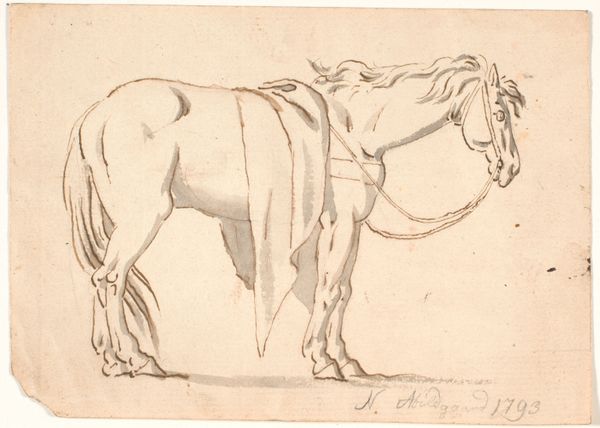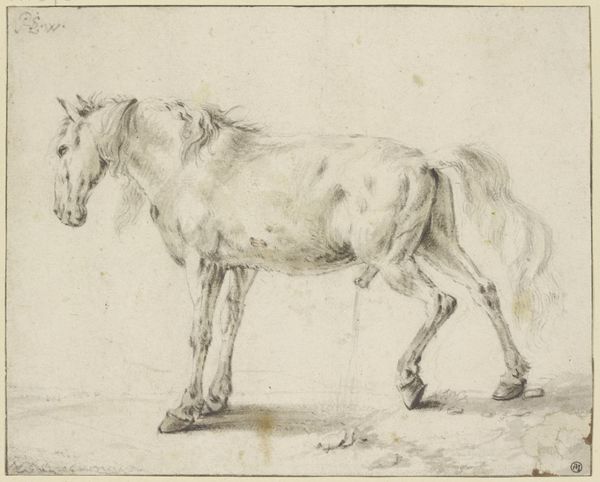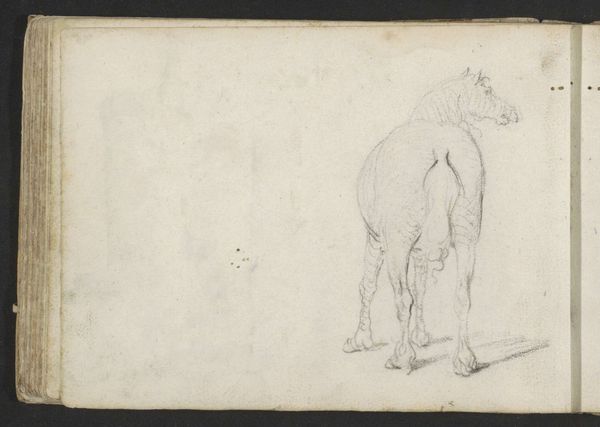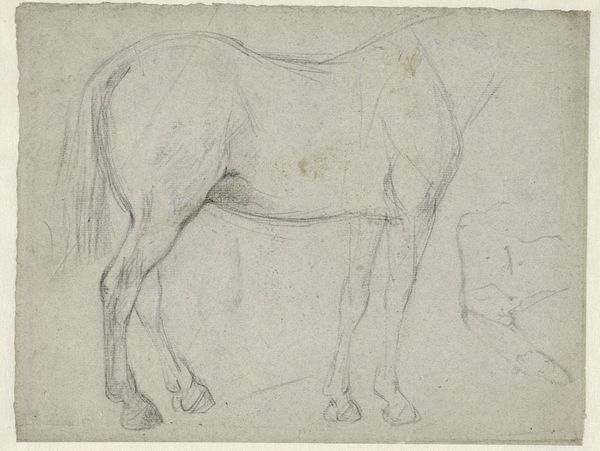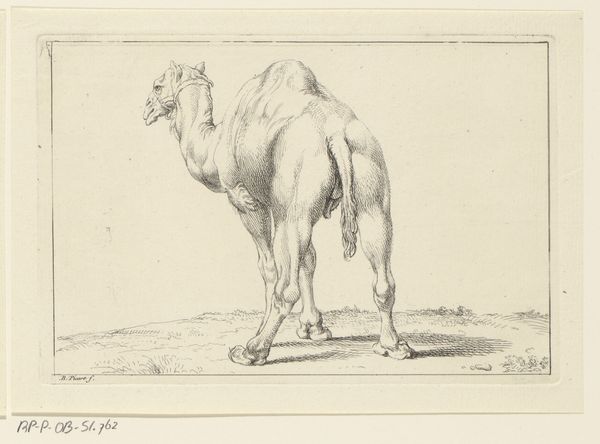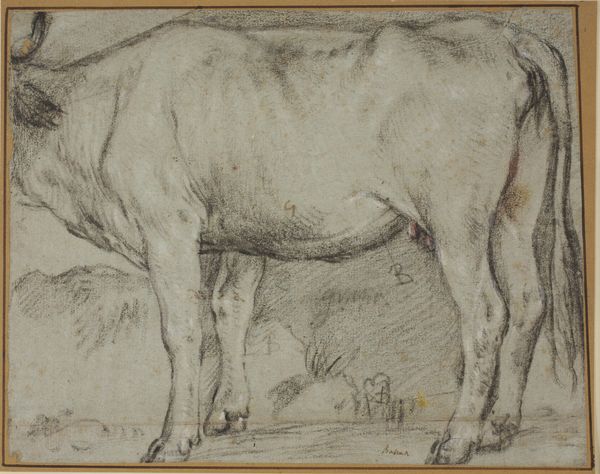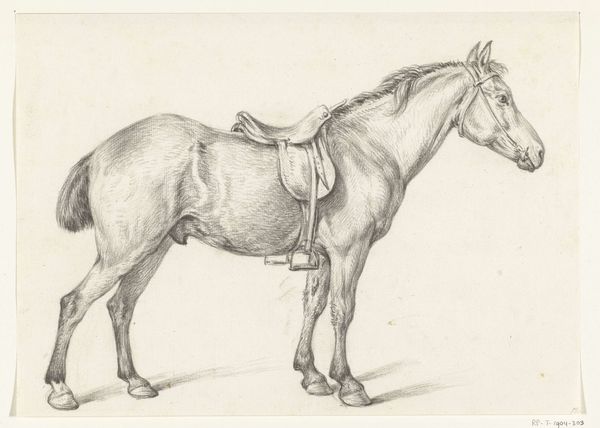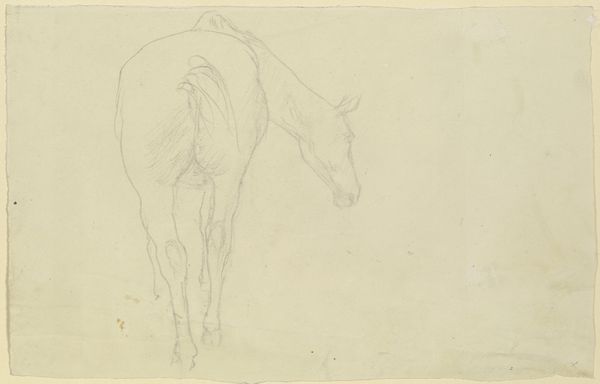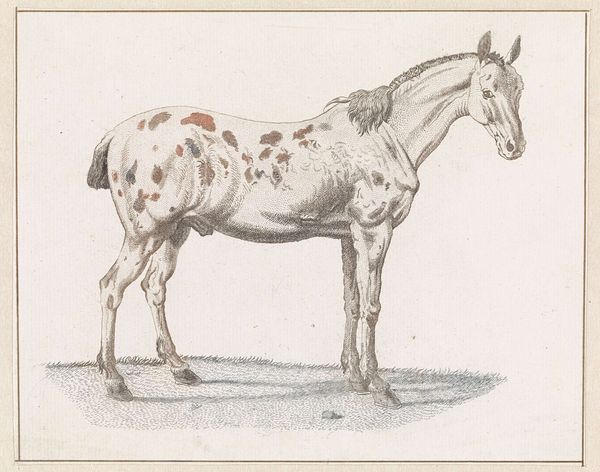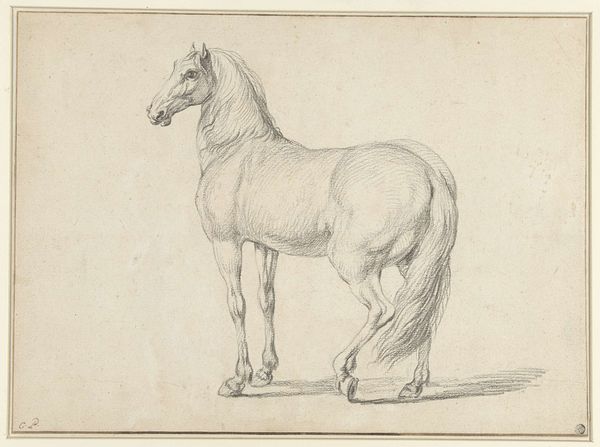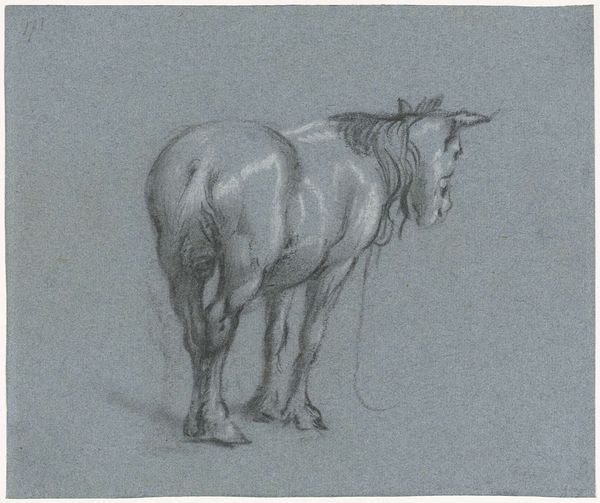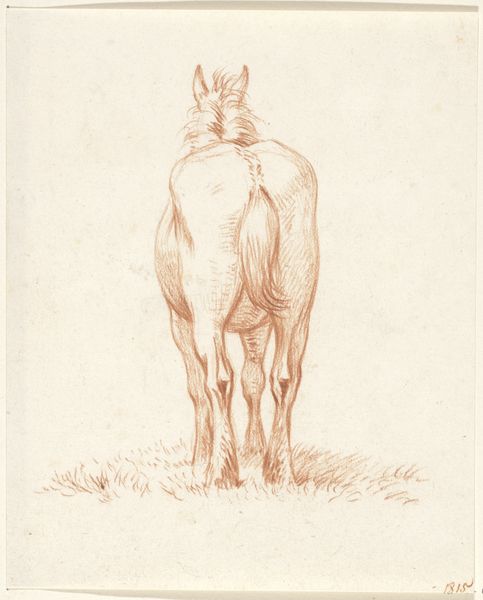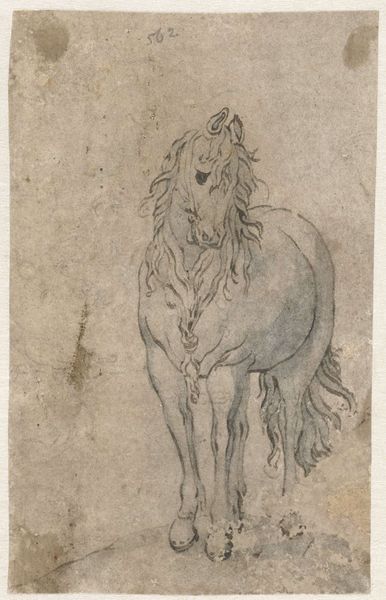
drawing, paper, pencil
#
pencil drawn
#
drawing
#
animal
#
dutch-golden-age
#
charcoal drawing
#
paper
#
form
#
pencil drawing
#
pencil
#
line
#
pencil work
#
realism
Dimensions: height 183 mm, width 198 mm
Copyright: Rijks Museum: Open Domain
Curator: Looking at Moses ter Borch’s “Horse with Knotted Tail, from Behind,” dating back to about 1660 and currently held at the Rijksmuseum… I find myself strangely captivated by its… posterior. Editor: Yes, intriguing! There's a stark simplicity. It feels incredibly grounded, solid. Like a monument, but made delicate by the pencil strokes. It's like Ter Borch is saying something important about… well, the back end of a horse! Curator: Precisely. The choice to focus on the form, specifically from this perspective, prompts reflection. The knotted tail, for instance, might suggest domestication, control, but also perhaps a certain aesthetic sensibility of the time. It reminds me a bit of formal portraiture, stripping away the usual markers of status and focusing instead on the animal itself. Editor: That's it! Knotted tails weren't uncommon, signifying work animals—draft horses. This isn't some pampered steed; it’s a worker. The knot is also fascinating. We control animals, manipulate their images, project fantasies of ourselves upon them. Curator: It is, quite literally, an image of service. Consider, too, the Dutch Golden Age context – a time of great wealth built in no small part on animal labour and agriculture. It really feels like the artist wants us to meditate on the labor required to build that prosperity. A meditation on the back of an animal quietly going about its duties, away from grand narratives. Editor: I see that visual pun. Maybe he wanted to bring awareness to what enables greatness—the 'behind-the-scenes' work often forgotten. Great art can reveal the mundane as profound. Curator: And reveal it with a deceptive lightness. Ter Borch uses these minimal lines to create such palpable volume. One could get lost in the subtle shading suggesting form, muscle, weight… and just like that, from the rear of the horse we find our front seat in contemplation. Editor: Beautifully put. Ultimately, I'm taking away this quiet image of an era of animal work in the Netherlands. Its power, even today, reveals the rich legacy left to interpretation in those delicate lines.
Comments
No comments
Be the first to comment and join the conversation on the ultimate creative platform.
